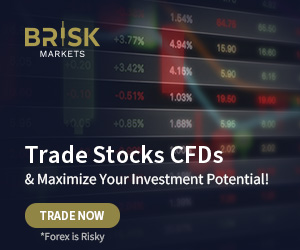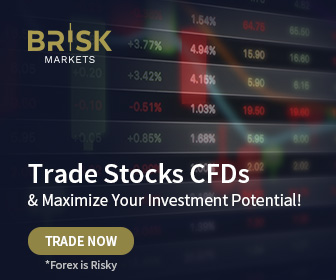Bitcoin has emerged as a symbol of stability amid the chaos wrought by President Donald Trump’s strict tariff policies. While U.S. stock markets are experiencing sharp volatility, the volatility of the leading cryptocurrency has dropped significantly.
Tariffs spark volatility in the stock market
Since the tariffs were announced on Liberation Day on April 2, the seven-day volatility of the S&P 500 (SPY) has risen sharply from 50% annually to 169%, its highest level since the COVID-19 collapse in 2020, according to Coin Desk. Investors are worried, looking for a safe haven from assets vulnerable to political maneuvering.
Bitcoin price holds steady as US markets decline
In contrast, Bitcoin’s price volatility has remained relatively calm. Its seven-day volatility is 83%, which is significantly lower than the S&P 500. This flexibility suggests that Bitcoin is evolving into a low-beta asset, less vulnerable to macroeconomic disruptions. James Butterville, head of research at Coinshares, asks: “Should investors place their trust in assets highly vulnerable to political influence and human error, or in a mathematical framework and an emerging store of value that is more resilient to these risks?”
Investors are moving away from traditional US assets
The turmoil is not limited to stocks. US Treasuries, usually considered safe havens, are being eliminated, sending yields up 62 basis points to 4.45% within a week. The US dollar index also fell to 100, its lowest level since September. “This reflects the evaporation of the exceptionality of US growth,” notes the Evercore ISI, suggesting declining confidence in U.S. assets.
While Bitcoin is constantly criticized for its volatility, recent trends point to a shift in perception of it. Its 30-day annual volatility remained below 80% in 2025, a marked decline from levels above 100% in previous years.
Bitcoin surpasses $84K as a global fear indicator
While the price of Bitcoin has surpassed the $84,000 mark, markets are returning to a familiar landscape of excessive enthusiasm mixed with anxiety and anticipation. In my opinion, the 8% rise in the space of a few hours following Trump’s announcement of the suspension of tariffs confirms that Bitcoin is no longer just a marginal cryptocurrency, but has become a sensitive indicator of the global economic climate and a direct reaction to geopolitical decisions.
From an analytical perspective, this rise reflects more than just the suspension of tariffs. It reveals the market’s growing awareness of the power of Bitcoin as an alternative asset, gaining traction amid the instability of traditional markets.
The remarks of BlackRock CEO Larry Fink played a pivotal role in boosting the leap. When one of the world’s leading asset managers declares that a potential 20% market crash represents a “buy opportunity,” he is not only guiding retail investors, but is setting the market for a massive institutional wave toward digital assets, especially Bitcoin.
Remarkably, Fink did not rule out the idea of a retreat, but rather adopted it, considering it a “tactical” step consistent with major structural changes in the markets. In my view, Bitcoin’s recent rally should not be considered an anomaly. But rather a logical consequence of the collapse of confidence in traditional markets and the growing demand for hedging strategies.
The market reaction may have been sharp, but it was not surprising. For some time now, Bitcoin has been acting as a “global fear indicator,” rising whenever political and economic outlook is uncertain. Historically, large price gaps have been followed by important announcements or events, just as they did this week. With Bitcoin reaching $83,600 after hitting a daily low of $74,700, it achieved a 13% rise in just two days.
Bitcoin derivatives rise amid widespread market optimism
With renewed optimism in cryptocurrency and global markets, interest in bitcoin derivatives has increased significantly. This is reflected in a 5% rise in Bitcoin’s open trading volume, which reached $54.69 billion.
The global market capitalization of cryptocurrencies rose to $2.6 trillion, recording a remarkable increase of 6.07% in 24 hours. This rise is not only a result of broader market dynamics. But a clear indication of a shift in investor sentiment towards riskier assets. This rally highlights a renewed wave of investor confidence that the cryptocurrency market desperately needed amid previous volatility.
So far, Bitcoin (BTC) is trading at $81,965.56, notching a strong gain of 5.54%, while Ethereum (ETH) is up nearly 9% to $1,610.03. Other noteworthy assets, including XRP andSolana (SOL), have also shown strength, each with gains of more than 8%.
Moreover, the Chinese government is preparing to increase tariffs. Perhaps by an additional 50% on top of the currently planned increases. This marks a pivotal moment in the ongoing trade conflict between the United States and China, exacerbating the conflict.
Views from the cryptocurrency industry support this trend, with Binance CEO Richard Teng recently commenting on the evolving landscape, asserting that despite inevitable short-term volatility. Assets like Bitcoin are poised to emerge more strongly under complex economic conditions.
“Many long-term investors still consider Bitcoin and other digital assets to be resilient during periods of economic tension and changing policy dynamics,” Teng emphasized. This perspective not only highlights investor sentiment. But also points to a potential paradigm shift regarding the role of cryptocurrencies in modern portfolios.










